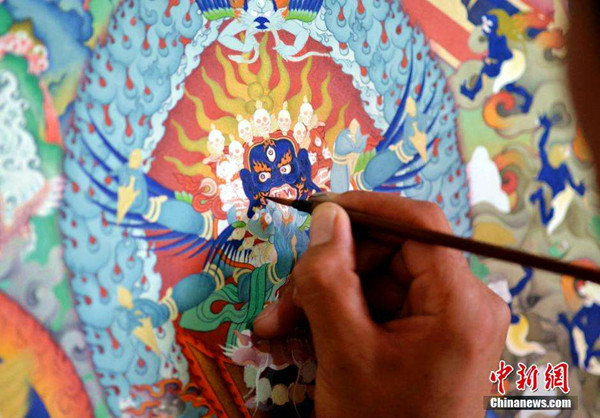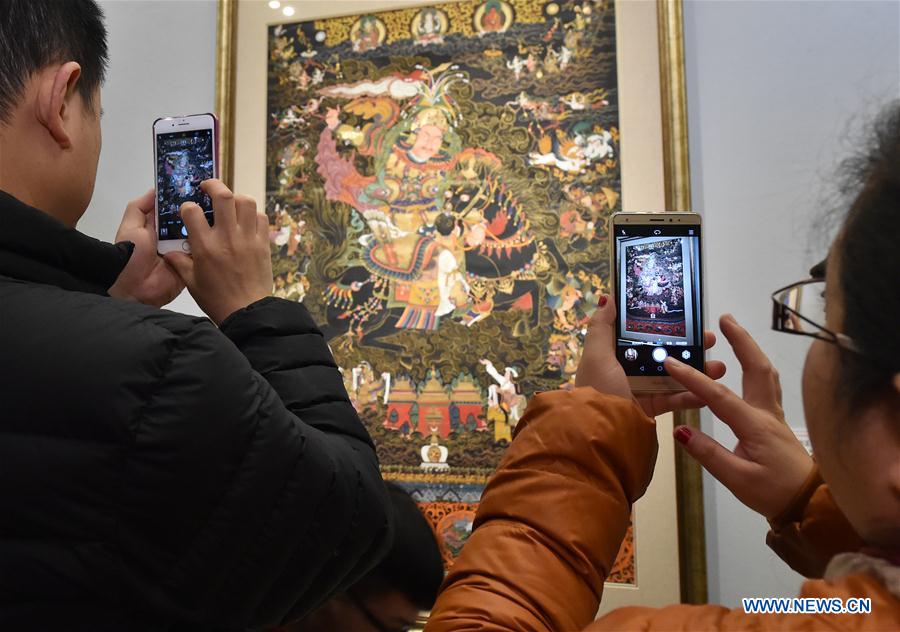Birthplace of "Reb-gong Art"
The plains of the Rongwo River in Tongren County, Huangnan Tibetan Autonomous Prefecture in Qinghai Province are known as "Reb-gong", that is, "the Golden Valley" in Tibetan. It is the center of Amdo Tibetan arts and culture and birthplace of Reb-gong Art, with the local Huangnan Tibetan Opera and thangka most famous.
In local traditional villages such as Niandouhu, Wutun, and Guomare, "every family has a painter; every household has thangka".
As an important part of the Tibetan Buddhism arts, Reb-gong Art has been included in UNESCO's Human Intangible Heritage list since 2009.
Recently, the management committee of Reb-gong cultural ecology protection experimental zone has built a thangka appraisal center while encouraging intangible cultural heritage talents to walk into campus, compiling professional teaching materials and setting up a teaching and learning center. Through these efforts, the committee aims to help inherit these traditional skills and organize the market for such works of art.
"Our thangka appraisal center has hired thangka masters who will evaluate the grade level, base picture, and mineral pigments of Reb-gong thangka," Zhao Xianxiang, deputy director of the experimental zone explained.
According to Zhao Xianxiang, the experimental zone now has 28 intangible cultural heritage learning centers. With official financial support, intangible cultural inheritors or art masters are taking the lead in passing on their skills in thangka, embroidery, wood carving, Tibetan opera, stone printing, and other arts.
The experimental zone has also sent masters to Tibetan Buddhist monasteries in Tibet, Sichuan, and other areas to collect and organize fresco designs and thangka drafts to prepare a "Comprehensive Collection of Reb-gong Thangka Line-Drawing Drafts". It has also organized scholars and native cultural inheritors to edit the Reb-gong thangka teaching materials.
Tashi Gyatso, a local Reb-gong thangka master born after 1985, is now a minor celebrity. He has held exhibitions in more than 30 cities throughout China and has applied for a project funding by the National Arts Fund.
"I hope to be an expert, not only in thangka painting, but also in identifying its feature and being able to explain it to others," he said.
Your Comment
Name E-mailRelated News
-
;
-
-

-
Tibet formulates the first Local Standard for Traditional Tibetan
In a thangka painting, not only the main character, but also every single detail is drawn vividly.
-
-
-

-
Thangka gets new lease of life
An ongoing thangka exhibition at Beijing's National Art Museum of China showcases dozens of paintings from recent years that celebrate contemporary artists' endeavors to enliven the tradition.
-
-
-

-
Exhibition of Tibetan Thangka painting held in Beijing
Exhibition of Tibetan Thangka painting was held in Beijing.
-
Based in Lhasa, Tibet Vista is a Tibet travel agency that specialized in Tibet permit, and Tibet tours for both private and group travelers at a local price!
•4 Days Lhasa City Group Tour from USD 460 •8 Days Everest Base Camp Group Tour from USD 850 •15 Days Mt.Kailash Group Tour from USD 1780 •2016 Tibet Train Tours from Beijing, Shanghai, Chengdu, Xining,etc










